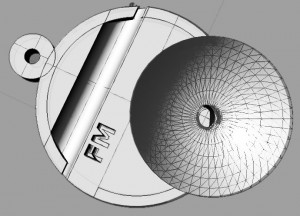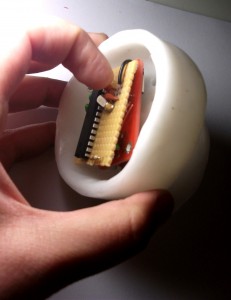OK, so I have been developing the work around the live radio over the last month. When I say last “month”, you assume that I am now done with three radio projects instead of one, but unfortunately, that’s not quite the case. My main interest in this project is to create a complete system composed of sound transmitters and receivers that are mobile and work efficiently together. I have been following the checklist I set for myself on the last post, which starts by shrinking the circuit. Before I start, I should tell you that I did a lot of miles in this project. Distance miles. Went to the airport twice to pick up my DHL shipments, where in theory I paid for a door to door delivery, then ended up skateboarding between airport terminals. 🙂 Back to shrinking the circuit, I ordered AtTiney84 from 

uploading sketch to standalone chip

I don’t have enough expertise in any of these details, but the web is a blessing. Check
MIT references here and and
arduio pages. So, I burnt the bootloader for the new chips using 2 arduinos, then wired the chip on a breadboard and uploaded sketches using arduino as ISP. Those are very interesting and cheap methods (since we don’t use and external programmer) for programming the chips. Then I tested the transmission pieces with the receiver pieces and they work together perfectly. For a newbie, that was a lot of learning and loots of troubleshooting! But awesome, now I can save size and money (the chip is 2.5 EUR while an arduino is 25 EUR! –big difference) and run the piece independently using 2 (3V) batteries. So that operation is done and tested, I needed to complete soldering the standalone board with the FM shield, and pack this is a nice 3D printed casing.

Quick render of the case

The printing thing took me over a couple of days of troubleshoot, and logistic problems, and other random stuff, so for the final presentation, realistically, I don’t think I will be able to finish those pieces (still need to solder the boards as well!), but I made a quick up mock up using polypropene, to give an idea of how this should look like notice the parabola at the microphone outlet, I would like to test this idea in the future using different geometries and materials.

Unfinished 3d prints

So for the demo, I guess, I will build a unit for the receiver, and keep the transmission units arduino dependent, just to illustrate the idea. I would have loved to finish everything . . . but time is fast. 🙂








